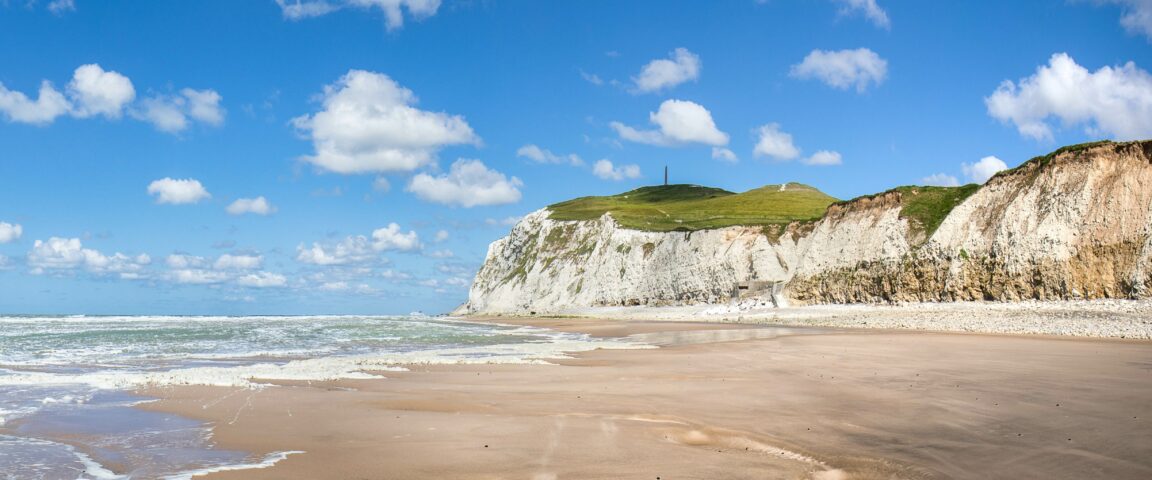Fossil Cliff of Sangatte
The Sangatte Fossil Cliff is a fascinating geological site, witness to several thousand years of natural evolution. This exceptional natural monument is made up of geological layers dating back to the Quaternary period, offering visitors a unique window into the geological past of the region.
Sangatte
The site is accessible all year round
Free
Dogs welcome
Facilities
- Viewpoint
- Car parking
- Accessible by public transport
- Cycle parking
Geosite details
The Sangatte Fossil Cliff is a fascinating geological site, witness to several thousand years of natural evolution. This exceptional natural monument is made up of geological layers dating back to the Quaternary period, offering visitors a unique window into the geological past of the region. Unlike typical cliffs, the Sangatte cliff is inclined at a 30° angle, which allows you to discover fossil strata that bear witness to the history of sea level fluctuations over the millennia. Among these layers, an ancient fossilized beach is visible, suspended halfway up the cliff, an impressive remnant of a time when the sea covered much of the current land. This phenomenon is rare and makes Sangatte a site of remarkable geological importance. The surrounding landscape is also great for hiking and exploring. Visitors can stroll along the coastline, admire the rock formations, and enjoy panoramic views of the English Channel and, on a clear day, the English coast. The site is particularly popular with geology enthusiasts, but also with families and hikers wishing to enjoy the natural beauty of the Opal Coast. is particularly popular with geology enthusiasts, but also with families and hikers wishing to enjoy the natural beauty of the Opal Coast.
